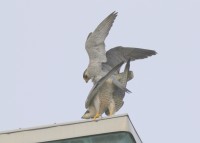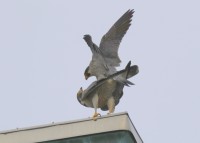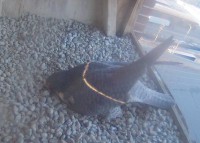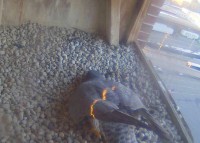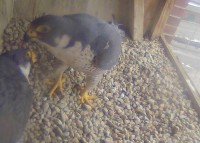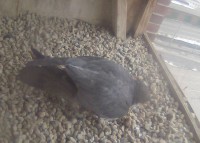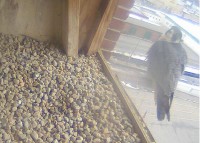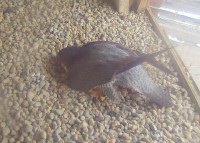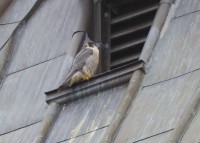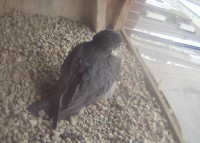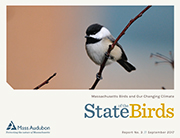Lawrence Peregrines: even more scraping!!
March 28, 2018 in In the Nest Box, lawrence peregrines, Peregrine Falcons Eastern Massachusetts, Peregrine Falcons Massachusetts
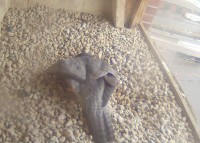 Another beautiful morning with a few clouds, winds SE 3MPH, and temp around 37F. The female continues to leave the nest box for a while and then return; again she enters the nest box and repeats the process of laying out horizontally and pushing the gravel around. This helps her to fashion the nest bowl to her liking and is all part of the preparing for egg laying!
Another beautiful morning with a few clouds, winds SE 3MPH, and temp around 37F. The female continues to leave the nest box for a while and then return; again she enters the nest box and repeats the process of laying out horizontally and pushing the gravel around. This helps her to fashion the nest bowl to her liking and is all part of the preparing for egg laying!
SCRAPING: Either bird can do this. The falcon runs its breast through the substrate or nest depression, pushing out with its legs behind. The bird is forming the nest cup (scrape), but this is also part of courtship. Scrapes may be made at several potential ledges before one is finally chosen for laying.
Literature Cited:
Cade, T. J., J. H. Enderson and J. Linthicum. 1996a. Guide to Management of Peregrine Falcons at the eyrie. Boise, ID: The Peregrine Fund, Inc. (Excerpt: Linthicum, Janet. Observing Breeding Behavior)
